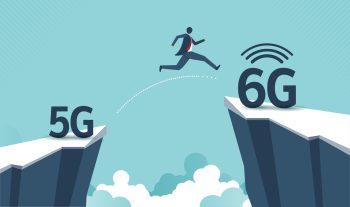
Written By: Mysore Madhusudhan, Executive Vice President, Collaboration and Connected Solutions, at Tata Communications
According to GSMA, 5G is expected to contribute an impressive USD $960 billion to global GDP. As one of the leading regions for 5G adoption, its continued growth and rollout in Asia Pacific will bring about transformative benefits to organisations here. 
One of the biggest impacts that 5G developments will bring is the advancement of Human-to-Everything connectivity. As more and more devices become connected to the internet, and to other devices, people will be able to interact in new and more powerful ways. Anything can be connected, from factory floors, vehicles, remote sensors and more.
A growth in standalone (or private) 5G networks will drive this, enabling new and immersive experiences that were not possible before. Imagine using augmented reality (AR) on a vehicle manufacturing line to help assess faults in real-time. By bringing improved efficiency across the value chain, connectivity will act as a catalyst for further growth.
5G in Action
We can see this in action, with the number of devices connected to the Internet of Things (IoT) predicted to reach 30.9 billion by 2025, according to Statista. Whether it is from a mobile device or a controlled private location, IoT has allowed organisations to interact on a larger scale. Connecting ordinary objects such as security systems and smartphones enables businesses to compete in the future, with data to power up decision-making.
For instance, there are already examples of sensors being used to monitor warehouse stock levels alongside GPS-enabled shopping carts. It’s a win for consumers who have guaranteed access to the goods they want – and it’s a win for retailers who can anticipate demands more precisely and manage stock levels accordingly.
The Race to 6G Has Begun
Looking ahead, the race to 6G is already intensifying across Asia Pacific. Singapore has announced its plans to launch Southeast Asia’s first 6G lab while South Korea aims to launch 6G by 2028.
“One of the biggest impacts that 5G developments will bring is the advancement of Human-to-Everything connectivity. As more and more devices become connected to the internet, and to other devices, people will be able to interact in new and more powerful ways.”
Eventually, 6G is expected to allow even faster speeds and capacity than 5G by several levels of magnitude. For instance, 6G internet will aim to support one microsecond latency communications—1,000 times faster than what is possible with 5G.
Some other potential applications of 6G internet include an integrated space-air-ground-sea network for truly global network coverage and more efficient wireless access points that can handle more users simultaneously. Mobile edge computing will also be built directly into all 6G networks, pushing the limits of artificial intelligence (AI) beyond what is possible today.
 (0)
(0) (0)
(0)Archive
- October 2024(44)
- September 2024(94)
- August 2024(100)
- July 2024(99)
- June 2024(126)
- May 2024(155)
- April 2024(123)
- March 2024(112)
- February 2024(109)
- January 2024(95)
- December 2023(56)
- November 2023(86)
- October 2023(97)
- September 2023(89)
- August 2023(101)
- July 2023(104)
- June 2023(113)
- May 2023(103)
- April 2023(93)
- March 2023(129)
- February 2023(77)
- January 2023(91)
- December 2022(90)
- November 2022(125)
- October 2022(117)
- September 2022(137)
- August 2022(119)
- July 2022(99)
- June 2022(128)
- May 2022(112)
- April 2022(108)
- March 2022(121)
- February 2022(93)
- January 2022(110)
- December 2021(92)
- November 2021(107)
- October 2021(101)
- September 2021(81)
- August 2021(74)
- July 2021(78)
- June 2021(92)
- May 2021(67)
- April 2021(79)
- March 2021(79)
- February 2021(58)
- January 2021(55)
- December 2020(56)
- November 2020(59)
- October 2020(78)
- September 2020(72)
- August 2020(64)
- July 2020(71)
- June 2020(74)
- May 2020(50)
- April 2020(71)
- March 2020(71)
- February 2020(58)
- January 2020(62)
- December 2019(57)
- November 2019(64)
- October 2019(25)
- September 2019(24)
- August 2019(14)
- July 2019(23)
- June 2019(54)
- May 2019(82)
- April 2019(76)
- March 2019(71)
- February 2019(67)
- January 2019(75)
- December 2018(44)
- November 2018(47)
- October 2018(74)
- September 2018(54)
- August 2018(61)
- July 2018(72)
- June 2018(62)
- May 2018(62)
- April 2018(73)
- March 2018(76)
- February 2018(8)
- January 2018(7)
- December 2017(6)
- November 2017(8)
- October 2017(3)
- September 2017(4)
- August 2017(4)
- July 2017(2)
- June 2017(5)
- May 2017(6)
- April 2017(11)
- March 2017(8)
- February 2017(16)
- January 2017(10)
- December 2016(12)
- November 2016(20)
- October 2016(7)
- September 2016(102)
- August 2016(168)
- July 2016(141)
- June 2016(149)
- May 2016(117)
- April 2016(59)
- March 2016(85)
- February 2016(153)
- December 2015(150)
